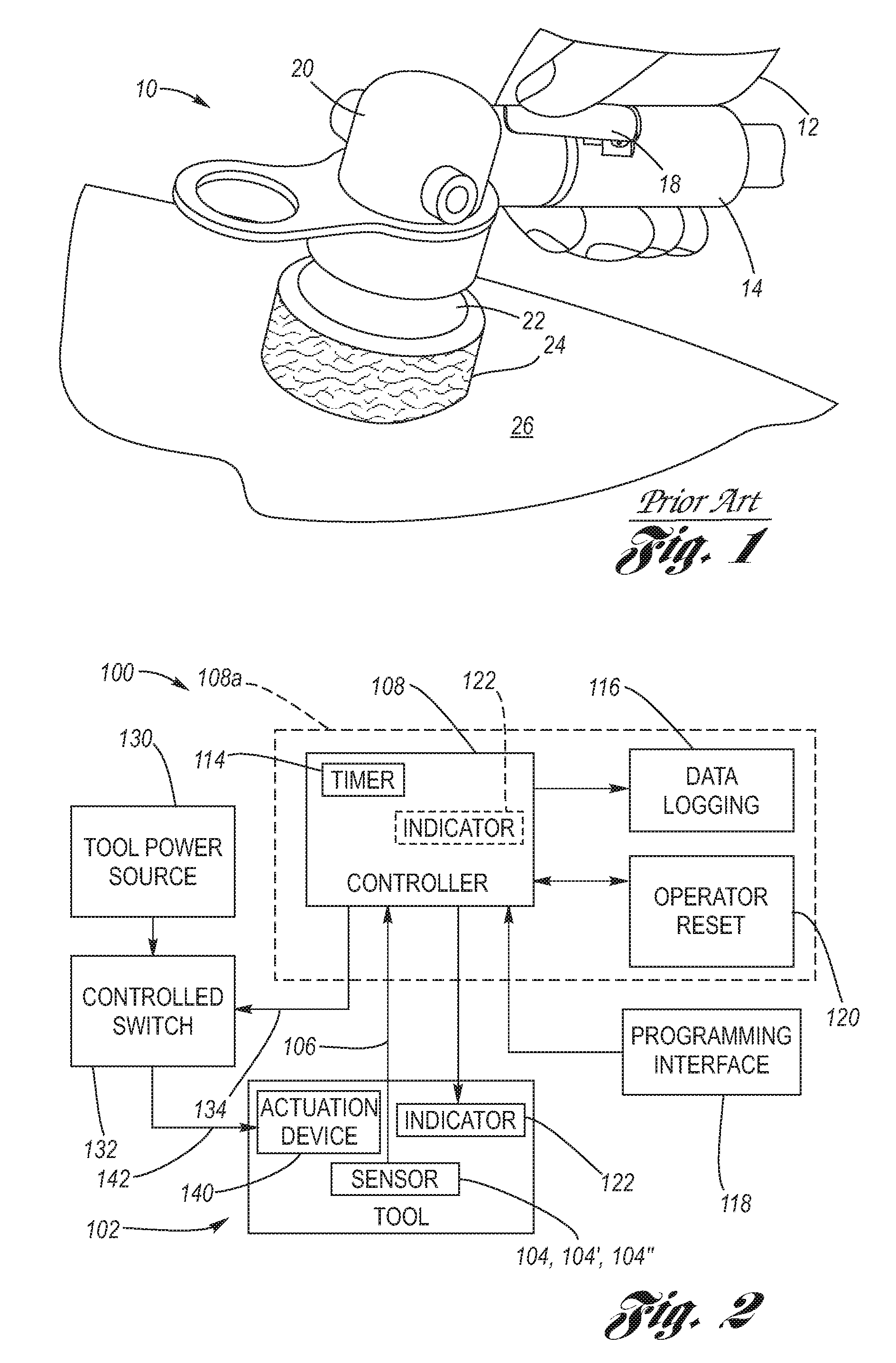System for Providing Quantitative Process Control of Finesse Polishing
a technology of finesse polishing and process control, applied in the direction of grinding machine components, grinding machines, manufacturing tools, etc., can solve the problems of varying difficulty in controlling, dull, swirl-like defects, time-consuming training, etc., and achieve the effect of preventing operator errors
- Summary
- Abstract
- Description
- Claims
- Application Information
AI Technical Summary
Benefits of technology
Problems solved by technology
Method used
Image
Examples
Embodiment Construction
[0023]Turning attention now to FIGS. 2 though 9, FIG. 2 depicts a block diagram overview of the system for providing quantitative process control of finesse polishing 100.
[0024]A conventional polishing tool 102, as for example an orbital polishing tool such as for nonlimiting example a model 57126 Dynabuffer™ of Dynabrade, Inc. of Clarence, N.Y. 14031, wherein other polishing tools of other companies may also be used, is modified to include at least one sensor 104. The at least one sensor 104 is, by way of preferred example, a rotational speed sensor 104′ affixed to the head 102a of the polishing tool 102 which senses the rotational speed of the polishing tool 102. By way of exemplification, the speed sensor 104′ is a Hall effect sensor 104″, affixed to the head 102a of the polishing tool 102 as indicated at FIG. 3, wherein the Hall effect sensor senses the revolutions of the internal orbital swing arm 102b of the polishing tool 102. The at least one sensor 104 is connected by a dat...
PUM
 Login to View More
Login to View More Abstract
Description
Claims
Application Information
 Login to View More
Login to View More - R&D
- Intellectual Property
- Life Sciences
- Materials
- Tech Scout
- Unparalleled Data Quality
- Higher Quality Content
- 60% Fewer Hallucinations
Browse by: Latest US Patents, China's latest patents, Technical Efficacy Thesaurus, Application Domain, Technology Topic, Popular Technical Reports.
© 2025 PatSnap. All rights reserved.Legal|Privacy policy|Modern Slavery Act Transparency Statement|Sitemap|About US| Contact US: help@patsnap.com



